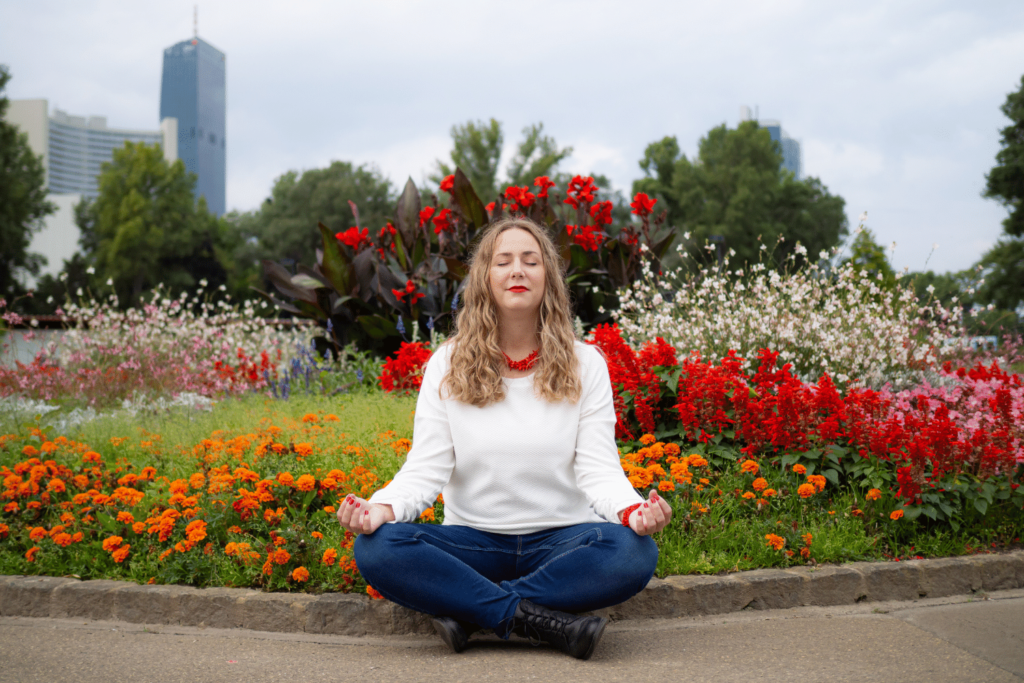What is Holistic Wellness?
A Comprehensive Holistic Wellness Guide

There is no one-size-fits-all answer to the question of what holistic wellness entails. The term “holistic” can be interpreted in a variety of ways, and there are many different approaches to achieving holistic wellness. However, there are some core concepts that are generally included in any definition of holistic wellness.
At its most basic level, holistic wellness and health are about living in harmony with oneself and with the world around us. It is about integrating all aspects of our lives – physical, emotional, mental, spiritual, social, and environmental – and seeing them as interconnected parts of a whole. Holistic wellness requires us to look at things from a broader perspective and to consider all possible solutions to problems rather than just the easiest or most obvious ones.
It is also about taking responsibility for our own health and well-being and not relying solely on doctors or other professionals to take care of us. In order to achieve holistic wellness, we need to become actively involved in our own healing process and learn how to listen to our bodies and intuition. We must also develop a sense of self-awareness and be willing to look at ourselves honestly, both our strengths and our weaknesses.
So, let’s take a more in-depth look at this!
What does Holistic Wellness mean?
Holistic Wellness is an approach that takes into account the whole person – body, mind, spirit, and emotions – in order to achieve optimum health and well-being. It is based on the belief that we are all interconnected and that our physical, mental, and emotional health are interdependent.
The goal of holistic wellness is to promote balance and harmony within the individual and between the individual and his or her environment. This is achieved through a variety of techniques, including diet, exercise, meditation, and stress reduction.
There is a strong connection between energy healing and holistic wellness. Energy healing is based on the belief that we are all connected by an invisible energy field. When this energy field is in balance, we are healthy and well. However, when it is out of balance, we may experience physical, mental, or emotional problems.
So, what exactly is energy healing?
National Cancer Institute defines Energy healing as a form of alternative and complementary medicine based on the concept that human bodies are infused with life energy. The goal of energy healing is to restore equilibrium in the patient’s energy flow. It’s used to alleviate anxiety and depression while also promoting good mental health.
There are many different approaches to holistic wellness. Some people focus on one aspect, such as diet or exercise, while others take a more comprehensive approach that includes all aspects of life. No matter what approach you take, the goal is the same – to promote balance and harmony in your life so that you can achieve optimum health and well-being.
7 Components of Holistic Wellness

There are seven components of holistic wellness: physical, mental, emotional, social, spiritual, environmental, and occupational.
Let’s take a closer look at each one:
1. Physical Wellness
Physical wellness is the state of being healthy in body and mind. It is the ability to wake up each day feeling rested and ready to take on the world. It is having the energy to play with your children, go for a run, or simply take a walk around the block. It is the strength to lift yourself up when you fall and the resilience to keep going when life gets tough.
Physical wellness is not just about being able to do things; it is about feeling good while you are doing them. When you are physically well, your whole being – body, mind, and spirit – is in harmony. You radiate health and vitality, and people can’t help but be drawn to you. Physical wellness is the foundation of a happy, fulfilling life.
2. Mental Wellness
Mental wellness is more than just the absence of mental illness. It is a state of mind in which you are able to cope with the challenges of life, make meaningful connections with others, and feel good about yourself. Mental wellness requires both inner and outer work. Inner work refers to the things we do for ourselves, such as managing our thoughts and emotions, setting boundaries, and taking care of our physical needs.
Outer work refers to the things we do for our relationships and our community, such as being compassionate and authentic with others. When our inner and outer worlds are in balance, we experience mental wellness.
When it comes to our mental wellness, it’s important to remember that every word we think has an influence on us. The way we think is influencing our whole life. A study done by psychologist at Queen’s University in Kingstone found out that an average person has 6,200 thoughts per day and most of those thoughts are negative.
Negative words and thoughts can influence our overall well being and the way we cope with life. By being mindful of the words we use and the thoughts we think, we can work towards achieving a more mentally well state.
Energy healing is a powerful tool for achieving mental wellness. It helps us become aware of the words we use and their effect on our whole life. By working with the energy field that surrounds and permeates our bodies, we can release blockages that prevent us from reaching our full potential.
3. Emotional Wellness
Emotional wellness is the ability to feel and express a full range of emotions in a healthy way. It includes both positive and negative emotions, and it involves being able to regulate our emotions, set boundaries, and cope with stress in a healthy way.
Research done by Dr. David Hawkins showed that every thought and emotion has a specific frequency. Negative thoughts and emotions make our body contract and energy gets stuck inside of our body, which can cause some health issues. On the other hand, if we think positive thoughts and emotions such as love, happiness, joy, etc. energy can flow through our body effortlessly. As a result, we have more energy for things we love and our overall well-being improves over time.
Energy healing can help us achieve emotional wellness. It works on the level where thoughts and emotions are created and it helps us to release blockages on the subconscious level and shift into a space of peace, balance, and love. Many of our emotional blockages are stored in our chakras (energy centers inside of our body), which influence our overall well-being. When our chakras are balanced, we are better able to cope with stress, express our emotions, and maintain our mental and physical health. As we work on improving our emotional wellness, we can begin to feel more joyful, peaceful, and connected in our lives.
Mental and emotional wellness can be achieved by taking good care of ourselves, through yoga, meditation, and mindfulness. These practices help us to connect with our inner selves and promote balance in our lives. In addition, they can help us to manage stress and emotions in a healthy way.

Would you like me to help you free your soul from emotional junk, heal and release the deep wounds that keep you stuck and crying behind closed doors so you can awaken the limitless energy of your soul to feel vibrant, lit up, and full of love?
4. Social Wellness
A sense of social wellness is essential to leading a happy and fulfilling life. We are social creatures, and our interactions with others have a profound impact on our overall well-being. When we feel disconnected from others, we can quickly start to feel isolated and alone. This can lead to feelings of depression and anxiety, as well as a host of other mental and physical health problems.
On the other hand, strong social connections have been linked with better mental and physical health, including lower levels of stress, anxiety, and depression. In fact, studies have shown that social support can even improve immunity and help to protect against chronic diseases.
To achieve social wellness we need to have social interaction with people from our society. It’s important to surround ourselves with people we love and enjoy spending time with.
5. Spiritual Wellness
Though often overlooked, spiritual wellness is an essential part of a holistic approach to wellness. After all, we are all spiritual beings. When we practice spirituality, we feel more connected with ourself and at home in our body. Spirituality opens a door to something greater than ourself and is the connection to an unlimited source of energy and universal wisdom.
When we connect with our spirit, we start remembering who we are and what is our life purpose. Our life gets much deeper meaning, which positively influence our overall well-being.
Spiritual wellness is not hard and doesn’t require much of your time. It’s often achieved through meditation. If you never tried meditation before, you can watch the video that explains how to overcome anxiety over doing meditation and download free meditation here.
6. Environmental Wellness
The world is a beautiful place, full of wonders and amazement. Unfortunately, it is also full of pollution and destruction. Every day, we see the impact of humans on the environment, and it is not always positive. Environmental wellness is an important component of holistic wellness because it helps us to appreciate the world around us and take steps to protect it.
By learning about the ways we can reduce our impact on the environment, we can make a difference in the world. We can start by recycling more, using less water, and conserving energy. These small steps can lead to big changes, and they can help to create a brighter future for our planet.
7. Occupational Wellness
Your job is more than just a paycheck. It has a bigger role in your life since you spend the majority of your time working. That’s why occupational wellness is such an important part of holistic wellness. When you’re occupational well, you’re doing work that’s satisfying and engaging. You have a sense of purpose and feel like you’re making a difference. You’re able to manage stress and stay healthy, both physically and mentally. In short, you’re able to thrive in all aspects of your life.
Occupational wellness isn’t just about finding the right job, though. It’s also about taking care of yourself both on and off the job. That means maintaining a healthy work-life balance, setting boundaries, and making time for activities that bring you joy. When you invest in your occupational wellness, you’re investing in your overall wellbeing. And that’s something everyone can benefit from.
Best Practices to Achieve Holistic Wellness

In order to achieve holistic wellness, it is important to focus on all aspects of your health, including physical, mental, emotional, social, spiritual, and environmental. Here are a few holistic wellness solutions that can help you achieve balance in all areas of your life:
1. Incorporate rest into your day-to-day routine
When it comes to wellness, rest is often overlooked. We live in a culture that glorifies busyness, and as a result, we don’t value rest as much as we should. But the truth is that our bodies need time to recover and repair. When we don’t give ourselves enough time to rest, we can quickly become run down both physically and mentally.
In order to achieve holistic wellness, it is important to make rest a priority. That means setting aside time each day to relax and rejuvenate. It might mean taking a nap, reading a book, or just spending some time in silence. Whatever form it takes, rest is essential to achieving balance in your life.
2. Make time for activities that bring you joy
In order to achieve holistic health wellness, it is important to make time for activities that bring your joy. When you do things that make you happy, you’re not only improving your own mood, but you’re also helping to reduce stress and promote overall health.
So what are some of the things that bring you joy? It might be spending time with friends and family, going for walks in nature, listening to music, or anything else that brings a smile to your face. When you make time for joy, you’re making an investment in your wellbeing.
3. Spend time in nature regularly
Nature has a way of calming the mind and lifting spirits. That’s why it’s so important to connect with nature regularly, especially when you’re feeling stressed or overwhelmed. Enjoy the fresh air by spending time in your neighborhood park, going for a stroll in the woods, or simply sitting on the patio. You’ll be amazed at how much better you feel after some time in nature.
4. Practice self-care
Self-care is any activity that you do to take care of yourself, both physically and mentally. When you practice self-care, you’re investing in your own wellbeing. And when you’re well, you’re better able to meet the demands of daily life.
There are many different forms of self-care, so it’s important to find what works for you. Some people find that a regular yoga practice helps to reduce stress and promote overall health. Others find that taking a hot bath or reading their favorite book is the perfect way to unwind after a long day. Whatever form it takes, make sure that you’re taking care of yourself both physically and mentally.
5. Be mindful of your thoughts and words
Your thoughts and words have a powerful influence on your well-being. That’s why it’s so important to be mindful of the things you say to yourself and the way you talk about yourself to others. When you’re able to control your thoughts and words, you’re also able to control your stress levels and overall mood.
So next time you find yourself thinking negative thoughts, take a step back and reframe them in a more positive light. And when you’re speaking to others, be sure to use language that is encouraging and uplifting. By being mindful of your thoughts and words, you can take a big step towards achieving holistic wellness.
6. Try Energy Healing
Energy Healing has been used by our ancestor for thousands of years to improve overall well-being. During an energy healing session, an energy healer looks at where you have blockages in your body and replaces negative energy with positive energy. As a result, you have more energy for things you love and feel happy, vibrant, and lit up.
You can also learn more about energy healing by taking energy healing courses online or by having a session with an energy healer.
Conclusion
Holistic health and wellness is more than just the physical body. It’s about the integration of all aspects of our lives -physical, emotional, mental, spiritual, social, and environmental. When you focus on all areas of your life, you’re able to achieve a sense of balance and wellbeing. As a result, you will be happier, healthier, and have more energy in your everyday life.
Like this article? Share it with your friends so they can achieve holistic wellness too.

NINA MAGLIC – THE ENERGY HEALER
Nina is a soul activator and transformational energy healer that makes big shifts in her clients’ lives at the speed of light. With her extensive intuitive and energy healing skills, she finds the root cause of clients’ problems and solves them once and for all.
Using powerful energy healing tools she teaches, Nina went from being totally exhausted and drained from being trapped on the hamster wheel of struggles to creating a life full of love, happiness, abundance, and joy in less than 1 year. Over the past few years, Nina has passed on her proven process to thousands of students worldwide. Nina’s big heart and passion for life transformation are a constant source of inspiration and motivation for her clients. Nina won hearts and minds with a combination of genuine compassion, superb healing skills, and vibrant energy.
When she’s not teaching you the energy secrets to skyrocket your power and life, you might find her dancing Zumba and doing Yoga with her daughter.

